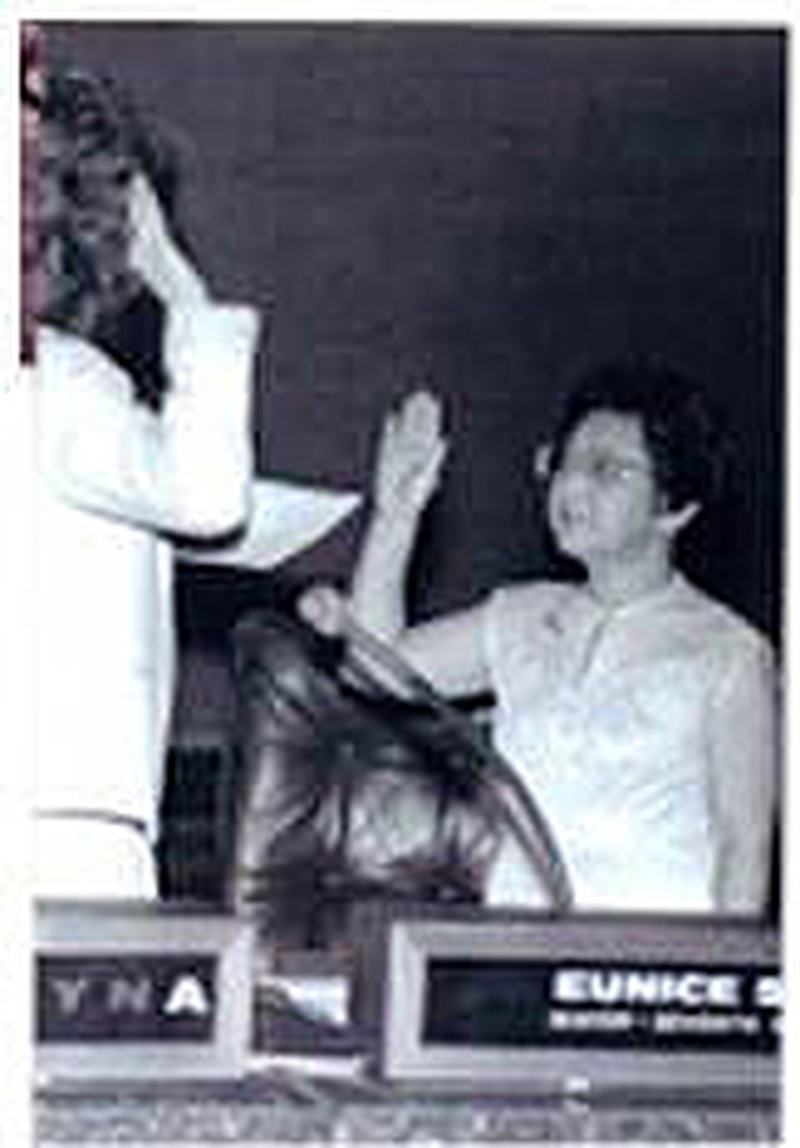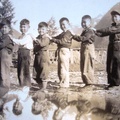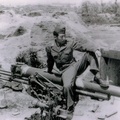Read Part 1 >>
The Mother and Daughter: Life between Japan and US
The military personnel were not the only people who came to Yokohama during the occupation period. Eunice Sato (nee: Noda), who currently resides in Long Beach, CA and was born in Livingston, CA in 1921, talked about her family’s international activities. Eunice’s father left a failed silk farming business in Shizuoka, while her mother came from Yokohama to San Francisco as a picture bride. Eunice’s family ran an agricultural business in Yamato Colony of California, but moved to Colorado, Michigan, and Washington D.C. after the war began, while her brothers became soldiers in the 442nd Regimental Combat Team, famous for being triumphant on the Italian front despite having many casualties.
After studying under adversity, Eunice became a teacher in her hometown and went to graduate school in New York. While in New York, she found out that there was teacher recruitments happening in Japan, so in the autumn of 1948 she travelled from Los Angeles to Yokohama by ship and started teaching at Ferris Girls’ Junior & Senior High School.
She was teaching English speaking classes and home economics classes until 1953, and there are many disciples who still respect her today. While teaching at Ferris, she married Thomas Sato who was residing as a GHQ staff and organized a wedding ceremony at the U.S. Naval Academy Chapel in Yokohama.
After returning to the U.S., Eunice was involved in volunteer activities in Long Beach, CA while raising three children. In 1975 she was the first ever non-white person elected as alderman of Long Beach, and in 1980 she was the first woman ever elected as mayor of Long Beach. It was revolutionary to elect a Japanese American woman as mayor, since Japanese Americans were not socially accepted. While she was mayor, she moved the navy bases, industrialized the bay area, and planned the construction of airports while improving international relationships with Japan by establishing a sister city relationship with Yokkaichi City.
Despite her short stature and her age of over 90, Eunice is still working hard every day in public duties. Her autobiography An Abundant Life depicts a moving story about a mother and daughter surviving during radical times, and she said she was able to come this far because of her mother—her role model—who came to America as a pioneering immigrant and raised many children despite the hardships.
WAC and Yokohama during the Occupation Period
In December last year, I flew to San Francisco and rented a car in order to meet with a person who owned a precious artifact. The artifact is a book titled From Japan With Love 1946-1948, which was recommended to me by Professor Roger Dingman two years ago. When I got a hold of the book, I was surprised by its content.
The author Mary A. (Kiddie) Ruggieri was born in San Francisco in 1921. In 1944, she joined the Women’s Army Corps (WAC) while being enrolled in the University of Minnesota. She came to Yokohama on a military cargo boat with 200 other soldiers on October 1946. She wrote the book as if she were writing a letter to her family back home, telling episodes of her everyday life living in a Quonset hut with her army friends and writing about her travels to Tokyo, Kamakura, Kyoto, Iseshima, Hiroshima, Nagasaki, and Sendai until April 1948.
The most intriguing aspect of the book is the collection of photographs taken by her favorite camera. The U.S. Army’s facilities, the streets where rubble is left, souvenir shops and black markets, store owners and farmers, gambling laborers, carts carrying hearses and fertilizer tubs, posters in a street corner, U.S. Army airplanes spraying DDT in the air…anything that grabs her interest is captured in her photographs. Also, she took photographs of women and children hanging around the U.S. campgrounds from a nurturing woman’s point of view.
I have looked at many photographs during my long career of studying Yokohama’s history, but the photographs in her book is unlike anything I have seen before. During my long stay in California, I contacted the publishing company to express my desire to introduce this book to Yokohama.
Her second son Richard (editor of this book and a lawyer) invited me to his house in Berkeley, where he showed me thousands of scanned photographs. Two days later, I was able to meet Mary in good health at her house in Modesto, where she thanked me for coming all the way from Yokohama.
She said she was impressed by the Japanese people’s efforts of rebuilding, was fond of the Japanese children, and is still loves the city of Yokohama. As for my request for borrowing and copying her photo albums, she said she was more than happy to allow me to do so.
I am in the process of finalizing the procedure with Richard. It might take some time before displaying the Mary Ruggieri photograph collection to the public, but in the near future, the collection might become precious records of Yokohama during the occupation period.
According to every person I met in California, Yokohama was shabby from being burnt, yet its citizens were lively. Everybody had twinkles in their eyes while sharing memories of Yokohama with me. I think California has a close relationship with Yokohama, since I felt so much love for Yokohama from these people.
* This article was originally published in Quarterly Yokohama (Summer 2012 vol.37), issued by Kanagawa Newspaper
© 2012 Hiroshi Onishi









